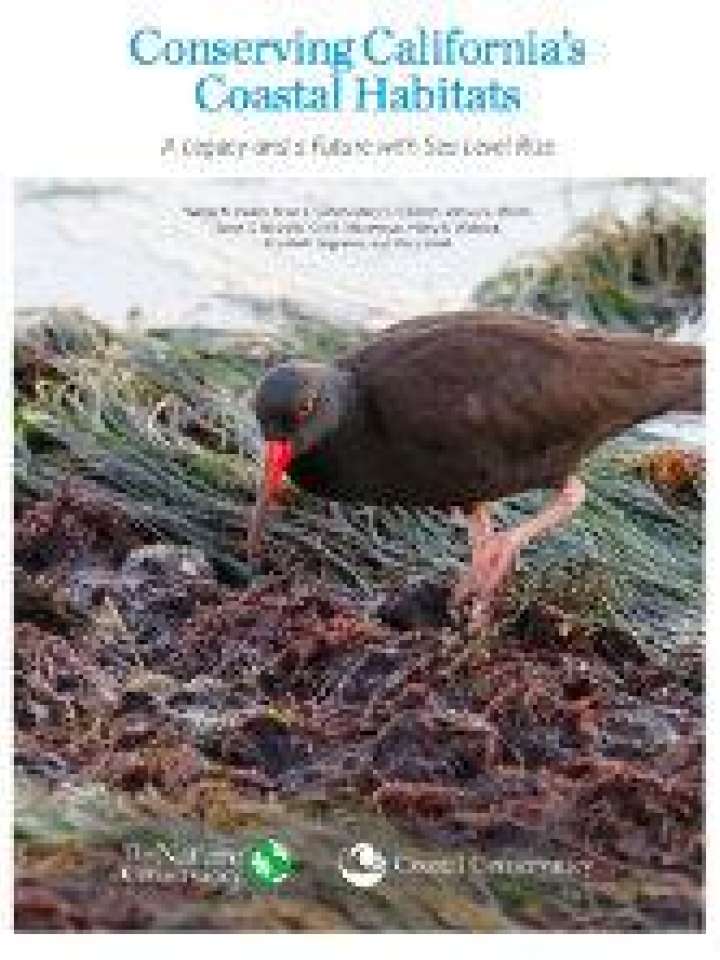Conserving California's coastal habitats: a legacy and a future with sea level rise
This study is the first statewide, comprehensive assessment of the vulnerability of California’s coastal habitats, imperiled species, and conservation lands to sea level rise, with the aim to inform current and future adaptation decisions and conservation actions. It assessed the vulnerability of 40 habitats to sea level rise by quantifying the sensitivity and spatial extent of projected exposure of each habitat patch to intertidal and subtidal waters, relative to its ability to move inland in response to rising sea levels.
Results of this spatially explicit assessment show that five feet of sea level rise will have dramatic impacts on coastal habitats, biodiversity, and protected lands along California’s coast. The study found that as much as 25% of the existing public conservation lands within the analytic zone will be lost to subtidal waters. Eight imperiled species—including coastal dunes milk-vetch, California seablite, and California Ridgway’s rail—only occur in areas that are projected to be inundated with a projected five feet of sea level rise. At least half of the documented haul-outs for Pacific harbor seals and Northern elephant seals, and nesting habitats for focal shorebirds like black oystercatchers, are also highly vulnerable.
The future of coastal habitats is dependent on the decisions we make today about how we will adapt to rising sea levels and manage coastal resources. By using habitat vulnerability results in combination with other data, this study identified five key strategies organized under two larger themes:
- Conserve and manage for resilience
- Maintain existing resilient conservation lands
- Conserve resilient landscapes
- Manage in place for resilience
- Mitigate potential losses for vulnerable habitats
- Conserve potential future habitat areas
- Adapt the built environment
Explore further
